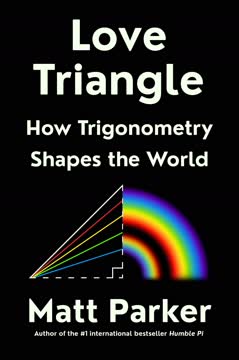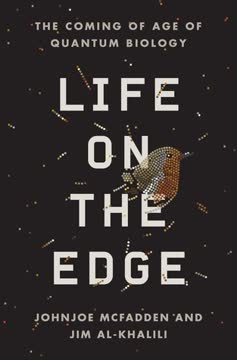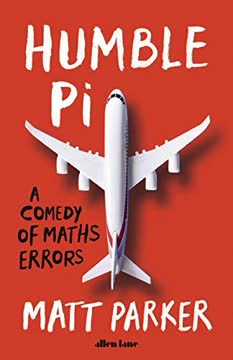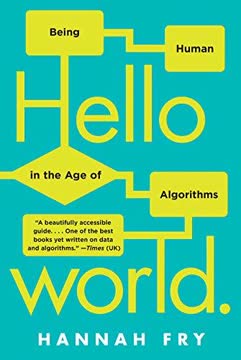Key Takeaways
1. Science & Math: Tools to Transcend Our Monkey Brains
We created science and mathematics in an attempt to step out of our limited human perspective and see the world as it objectively is, not merely as we experience it.
Overcoming Intuition. Human intuition, shaped by evolution, often misleads us about the true nature of reality. Science and mathematics are tools we developed to bypass these limitations, allowing us to observe the universe objectively.
- Evolutionary hangovers: Cravings for sweet, salty, and fatty foods, fear of unexpected movements.
- Intuitive fallacies: Belief in a flat Earth, the Sun revolving around the Earth.
Expanding Our Senses. Science expands our senses beyond the narrow spectrum of our vision and hearing. It allows us to measure unimaginably large and infinitesimally small distances, revealing truths that are otherwise inaccessible.
- Telescopes: See beyond the visible spectrum.
- Microscopes: Explore the infinitesimally small.
The Pursuit of Objective Truth. Science is a continuous striving to learn how reality truly is, recognizing the limits of our senses and intuition. It's about not just knowing, but having a way to find out, even when it contradicts our initial perceptions.
2. Endless Possibilities vs. Curated Knowledge
A library containing all possible knowledge might as well contain no knowledge at all.
The Babel Library Paradox. A library containing every possible combination of letters or pixels is ultimately useless. The sheer volume of meaningless data overwhelms any potential for finding genuine knowledge.
- Borges' Library of Babel: Contains every possible book, but finding a coherent text is nearly impossible.
- Basile's digital library: Contains every possible page of writing, but mostly gibberish.
The Signal-to-Noise Problem. In a complete library, the signals of truth are drowned in oceans of noise. Distinguishing fact from fiction becomes an insurmountable challenge.
- Finding a cure for cancer is impossible if every page containing it is indistinguishable from pages with critical errors.
The Value of Curation. Unlike a random collection of everything, curated knowledge is carefully selected, edited, and organized. This process results in pages that are not random but full of meaning, making knowledge accessible and useful.
3. The Unimaginable Weirdness of Alien Life
Evolution is much more imaginative than we are.
Beyond Humanoid Forms. Our limited imagination often leads us to envision aliens as variations of ourselves. However, there's no reason to expect extraterrestrial life to resemble humans in size, shape, or physiology.
- Bipedalism: An anomaly on Earth, not a universal standard.
- Hollywood's influence: Movie aliens are often just humans in costumes.
Size and Environment. The size and form of life are shaped by its environment. Extraterrestrial life could range from microscopic organisms to colossal beings adapted to unique planetary conditions.
- Enceladus and Europa: Moons with subsurface oceans that could harbor whale-like creatures.
- Argentinosaurus: A dinosaur that approached the limits of size on Earth.
Evolution's Boundless Creativity. Evolution is constrained only by what works, not by our preconceived notions. Alien life could be far wilder and weirder than anything we can imagine, adapted to environments beyond our comprehension.
4. The Earth: An Imperfect Sphere Shaped by Time
Spheres come in all sizes, but not in all shapes.
The Illusion of Roundness. While spheres and circles are fundamental geometric shapes, perfect roundness is rare in nature. Even seemingly round objects like planets are subject to distortions and imperfections.
- Raindrops and bubbles: Approximations of spheres, but distorted by wind and gravity.
- Stomata and cells: Biological structures that deviate from perfect circularity.
Earth's Imperfections. The Earth is not a perfect sphere but an oblate spheroid, bulging at the equator due to its rotation. Mountains, valleys, and ocean trenches further contribute to its irregular shape.
- Olympus Mons: A massive volcano on Mars that distorts the planet's shape.
- Saturn and Jupiter: Gas giants that are significantly flattened at the poles.
The Quest for Circular Perfection. Despite the imperfections of nature, humans have strived to create perfectly spherical objects for scientific purposes. The gyroscopes used in Gravity Probe B are the most perfect spheres ever crafted.
5. Time: A Human Construct in a Wobbly Universe
What time is it? is actually “What time do we all want it to be?”
The Unreliability of Earth's Rotation. The Earth's rotation is not a reliable timekeeper. Fluctuations in its spin, caused by gravitational forces and internal processes, make the length of a day variable.
- Greenwich Mean Time: An average solar time, but still subject to irregularities.
The Precision of Atomic Clocks. Atomic clocks, based on the predictable oscillations of atoms, offer a much more accurate measure of time than celestial observations.
- Cesium atoms: Used as the pendulum in atomic clocks.
- Universal Coordinated Time (UTC): The official global time, calculated from a network of atomic clocks.
The Subjectivity of Time Perception. Our perception of time is not constant but is influenced by our emotions, experiences, and biological rhythms. Time can seem to speed up or slow down depending on our state of mind.
6. Free Will: A Tangled Web of Choice and Determinism
The chance that higher life forms might have emerged in this way is comparable to the chance that a tornado sweeping through a junkyard might assemble a Boeing 747 from the materials therein.
The Illusion of Control. The question of free will explores whether our actions are predetermined by past events or if we have genuine agency to choose our own paths.
- Quetelet's "terrifying exactitude": The predictability of crime rates suggests a lack of free choice.
- Fixed action patterns: Instinctive behaviors in animals that seem to lack conscious control.
Parasitic Mind Control. Some parasites can manipulate the behavior of their hosts, overriding their natural instincts and forcing them to act in ways that benefit the parasite.
- Emerald cockroach wasp: Stings a cockroach's brain, turning it into a docile zombie.
- Toxoplasma gondii: Alters rat behavior, making them attracted to cat urine.
The Quantum Realm and Chaos Theory. Quantum mechanics and chaos theory challenge the notion of a deterministic universe, suggesting that randomness and unpredictability play a fundamental role.
7. The Illusion of Control: Belief Perseverance and Bias
What the human being is best at doing is interpreting all new information so that their prior conclusions remain intact.
Belief Perseverance. People tend to cling to their beliefs even in the face of overwhelming evidence to the contrary. This phenomenon is known as belief perseverance.
- The Seekers: A doomsday cult that doubled down on their beliefs after their predicted apocalypse failed to occur.
- Rigged calculators: Subjects continued to trust the calculator even when it gave obviously wrong answers.
Confirmation Bias. We tend to seek out information that confirms our existing beliefs and ignore information that challenges them. This is known as confirmation bias.
- YouTube algorithm: Recommends videos that reinforce existing political views.
- The power of suggestion: Psychics use generic statements and educated guesses to create the illusion of insight.
The File Drawer Problem. Science is not immune to psychological biases. The file drawer problem refers to the tendency to publish positive results while ignoring negative or inconclusive findings.
8. Love and Other Animal Emotions: Beyond Human Concepts
and all the virtues of Man without his Vices.
The Limits of Anthropomorphism. Attributing human emotions to animals can be misleading. While animals may exhibit behaviors that resemble human emotions, their inner experiences may be fundamentally different.
- Byron's epitaph for Boatswain: Ascribing human virtues to a dog.
- Dolphin smiles: A permanent facial expression that doesn't necessarily reflect their emotional state.
Scientific Approaches to Animal Emotions. Scientists use various methods to study animal emotions, including behavioral observations, brain scans, and hormonal measurements.
- Restaurant Row: An experiment that suggests rats experience regret.
- Paralympic judo: Study of facial expressions in blind athletes.
The Ineffability of Animal Experience. Ultimately, we cannot fully know what it's like to be another animal. Their umwelt, shaped by their unique sensory abilities and evolutionary history, is fundamentally different from our own.
9. Reality Through a Keyhole: Limited Perception, Infinite Umwelt
The data clearly showed that the group had been gulled.
The Subjectivity of Sensory Experience. Our perception of reality is limited by our biological hardware. Different species, and even individuals within the same species, experience the world in unique ways.
- Human vision: Limited to a narrow band of the electromagnetic spectrum.
- Color blindness: Genetic variations that alter color perception.
The Umwelt of Smell. Smell plays a vital role in the lives of many animals, guiding their feeding, fighting, fleeing, and reproduction. Humans, however, have largely lost their reliance on smell.
- Ants: Use scent to navigate and find food.
- Rats: Avoid cat pee due to innate fear of predators.
The Power of Suggestion. Our brains are prone to seeking out things that confirm what we already think, and ignoring things that challenge its preconceptions.
Last updated:
Review Summary
The Complete Guide to Absolutely Everything (Abridged) receives mixed reviews, with an average rating of 4.10/5. Many readers praise its entertaining style, humor, and accessible explanations of scientific concepts. The authors' personalities shine through, making it feel like a fun podcast. Some criticize the lack of cohesion between topics and its basic nature for those well-versed in science. Overall, it's recommended for science enthusiasts and as an introduction to various scientific subjects, though it may not satisfy readers seeking more in-depth exploration.
Similar Books







Download PDF
Download EPUB
.epub digital book format is ideal for reading ebooks on phones, tablets, and e-readers.




